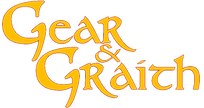
Commission Work
We've undertaken commissions from both individuals and heritage groups. Whilst the majority of pieces have been reproductions of specific finds, reasonable speculative reproductions can also be made. However, we reserve the right to decline work if we feel it will impact our integrity and reputation for accuracy and honesty in a negative way.
Commission Enquiries can be made via the Contact Form or directly via e-mail. Feel free to get in touch for a quote, we're more than happy to discuss your requirements in detail and we'll advise you of timescales and whether a deposit is needed before beginning work. As with Stock items, payment can be made via secure payment link or bank transfer.
Below you'll find some of our past commissions, we'll keep adding to this section with new work so keep your eyes peeled for updates
A Bronze Age Razor
Commissioned by the Strathearn Archaeological and Historical society, this is based on the best preserved of several Bronze Age Razors found during local excavations.
The razors all had flat tangs with a small hole, presumably for securing into a slot in the handle. As no trace of a rivet or handle survived on any of the examples, which might indicate they were organic.
Here we opted for a handle made from the tine of a red deer antler, and a small wooden peg was hammered in to keep it secure.
Now complete it will take its place in an exhibition for the Strathearn Community Campus Archaeology Trail display, along with some work from our good friend, Pictavia Leather! (more photos to follow!)


A Viking Age Hunting Knife
A customer came to me with a a pseudo-sharp pattern-welded knife they'd bought, but wanted a sheath more in-keeping with the cultural background they were portraying.
I re-handled it with with an oak grip and ground the back of the blade so that the proportions were consistent with Early Medieval examples.
Work could then start on the sheath which was based on an original find from Cheapside in London, and the copper alloy binding was worked from bar consistent with both the rivet holes on the surviving sheath and one of the few surviving instances of metal work from a knife sheath in the British Isles (Cumwhitton Cemetary in Cumbria)
I really like the pattern on this sheath, with its combination of interlace, arcanthus and simple geometric designs!




A New Scabbard
I was asked to provide an evidenced-based scabbard that could be used both on the re-enactment battlefield and during educational school visits.
I started by making a wooden core to fit the blade, lined it with sheepskin and bound it first in linen then with leather. As with the surviving examples the core was made so that once complete the scabbard would be only as thick as the guard,
The leather was sewn on with a flesh/grain stitch so that the thread is not visible and won't wear by rubbing against the user's clothes when worn.
Rather than opt for the baldric & strap distributor commonly seen in re-enactment, I opted for a strap-slider and belt evidenced much more frequently in archaeology and manuscript illustrations, fabricating a buckle based on a grave find from Repton in Derbyshire.




Craft Swap
I signed up for a craft-swap thinking I'd make a piece in leather, but then drew Hamish of Pictavia Leather!
After some thought I decided make him a Pictish bone cloak pin based on one from North Uist and, because he is a regular feature at the Scottish Crannog Centre, a red deer antler comb from Buiston Crannog in Ayreshire.
Crannogs typically date to the Iron Age but some, like Buiston, Lagore in Ireland and Llan-gors in Wales, show occupation into the Viking Age, providing a nice link between his period and mine.
I finished the package with some thread winders based on examples from Scotland and Norway




